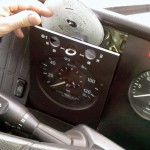 Digital tachographs are well established in Europe. The technology first took centre stage in 2004 and was made compulsory by the EU in 2006 for vehicles over three and half tonnes. The technology is used to track and record the time a driver spends behind the wheel and how fast they are going. They are commonplace in the transport industry where employers have to manage and stay within EU drivers’ laws.
Digital tachographs are well established in Europe. The technology first took centre stage in 2004 and was made compulsory by the EU in 2006 for vehicles over three and half tonnes. The technology is used to track and record the time a driver spends behind the wheel and how fast they are going. They are commonplace in the transport industry where employers have to manage and stay within EU drivers’ laws.
However, recent developments in India have lead the country to start considering the adoption of the technology. In an article published by Dipak Kumar and Pankaj Doval for The Times of India, the Road Transport Ministry in Karnataka are seeking an explanation for a series of recent bus fires. The ministry sought an explanation from manufacturer Volvo and are also looking into the possibility that overworked drivers could be behind the incidents. A spokesperson from Volvo said that a finalised report is coming soon, as they are still conducting an inquiry into the case.
Tachograph technology could greatly benefit India when investigating traffic accidents like this in the future. Automobiles can be fitted with a digital tachograph and the data from a driver’s journey can be recorded onto a ‘driver card’. The information stored on this card can be periodically downloaded by transport authorities or employers to track the driver’s speed, distance travelled and rest times.
While this may sound good in theory, questions are raised as to which governing bodies would check and enforce this technology. In the EU, it is an employer’s responsibility to keep track of these driving records and be ready to present them when transport authorities require them. Failure to make or keep records under GB domestic rules can lead to fines up to £2,500.
Aside from it being a legal requirement, there are a number advantages to digital tachograph equipment. It helps reduce the likelihood of unfair competition when a business forces its drivers to work over their legal driving hours. As such, it creates a fairer market where smaller companies that abide by the rules aren’t being muscled out by exploitative competitors.
The technology also allows employers to identify problem areas and improve their efficiency. Stoneridge Electronics are a company which provide tachograph analysis packages that can be very beneficial to employers. They can use the analysis software to create business reports and track trends. If drivers aren’t taking the most efficient routes for example, employers can work with them and improve efficiency. It is also a good deterrent against bad driving habits like speeding.
But perhaps the biggest advantage to tachograph devices are their usefulness in the event of a road accident. If a driver is ever involved in a crash, the tachograph will give a detailed report of how fast they were going and how long they had been driving. When this data is stood up against eye-witness accounts and other testimony, it can be invaluable for shedding light on the events.
While the implementation of tachographs in India may only be a pipe-dream, it’s clear the country could make excellent use of this technology and the advantages it provides.
 Just a few weeks ago we brought you news of HTC’s new pages that allowed us to track the progress of OS updates for the HTC One and several other HTC phones.
Just a few weeks ago we brought you news of HTC’s new pages that allowed us to track the progress of OS updates for the HTC One and several other HTC phones. 



Connect
Connect with us on the following social media platforms.